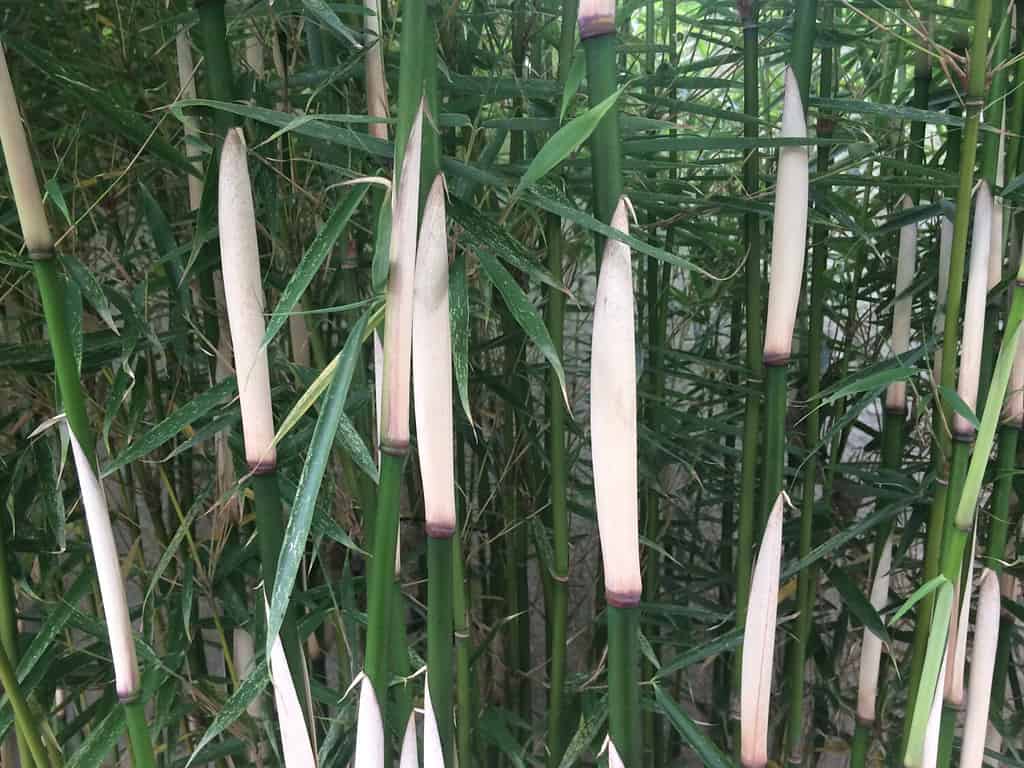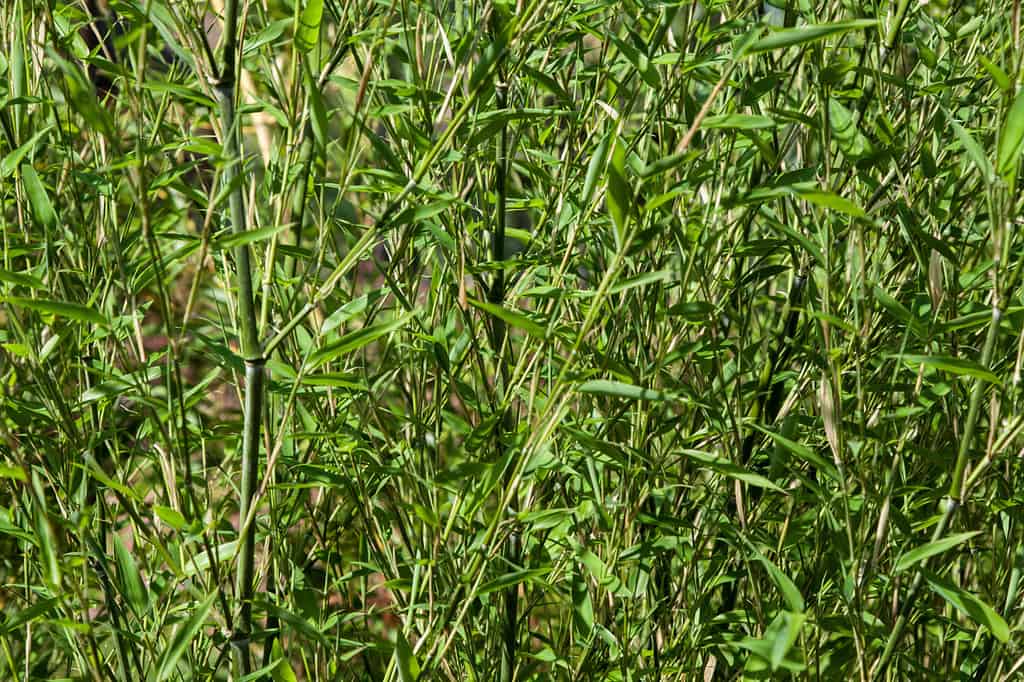Bamboo is an amazing plant beloved for its beauty, versatility, and sustainability. This plant is native to regions all around the world. It belongs to the Poaceae (grass family) and has 1,400 species across 115 genera. Bamboo has played a prominent role in culinary and medicinal applications for thousands of years. However, it has proven its use in other areas as well. Traditionally, bamboo got used for construction, furniture making, and dishware. And it still plays a role in those areas today.
Bamboo has become increasingly popular as a landscaping plant in recent years due to its unique appearance and ease of cultivation. If you live in Kentucky and are interested in growing bamboo, several species are well-suited to the state’s climate and growing conditions. In this article, we’ll take a closer look at some of the most popular bamboo species for Kentucky gardens and provide tips on caring for these lovely plants.

is a popular bamboo species, even though it is considered invasive in some areas.
©iStock.com/Wirestock
Bamboo Species for Kentucky Gardens
Phyllostachys aurea
Phyllostachys aurea, also known as golden or fishpole bamboo, is a very popular bamboo species. But it spreads quickly and easily on its own. So some states consider it to be an invasive plant. Check with your local government to learn if you can plant this lovely species in your yard or garden. It is winter hardy and can grow up to 20-30 feet tall. This bamboo has beautiful golden-yellow canes with foliage that reaches up to 6 inches long. And if you are interested in trying bamboo out for food, the young shoots from this species are edible. It can add a touch of exotic beauty to any landscape.
Phyllostachys bissetii
Phyllostachys bissetii is another great bamboo species for Kentucky gardens. This species is slightly smaller, typically only reaching 20 feet tall (at most). Bisset bamboo has green canes that turn yellowish-brown with age. This species is known for its upright growth habit and thick canopy, which makes it a fantastic choice for creating privacy screens or windbreaks.
Fargesia robusta
Otherwise known as clumping bamboo, Fargesia robusta, is ideal for smaller gardens or containers. Like Bisset bamboo, clumping bamboo makes a lovely windscreen. The difference is that clumping bamboo is quite a bit smaller. It typically only reaches approximately 10 feet tall. Unlike other bamboo species, Fargesia robusta does not have invasive roots. Instead, it stays in clumps, making it an option for landscaping or adding a touch of greenery to patios or balconies. It also creates a narrower screen than many other species.
Semiarundinaria fastuosa
Japanese temple bamboo (Semiarundinaria fastuosa) would make a great addition to many Kentucky gardens. It grows up to 25 feet tall and creates a wonderful, narrow privacy screen. However, it does grow even taller in areas with winter temperatures that get down below zero. Temple bamboo has green canes that change color when exposed to plenty of sunlight. The magnificent bamboo can add a touch of drama and exoticism to any landscape.

Clumping bamboo (or
Fargesia robusta) is not invasive and grows in dense clusters.
©Egeria/Shutterstock.com
How to Grow Bamboo in Kentucky
Choose the Right Location — When choosing a location to plant bamboo, it’s important to consider the amount of sunlight and the area’s soil conditions. Bamboo prefers well-draining soil with a neutral to slightly acidic soil pH. It also needs plenty of sunlight. Anywhere from 6 hours of direct sunlight to a full day of light daily will help your bamboo thrive. The amount of light required may vary depending on the species but will be at least that solid 6 hours.
Prepare the Soil — Take the time to prepare the soil properly before planting your bamboo. Start by removing any weeds or grass from the planting area. Then, loosen the area to a depth of at least 12 inches and mix in compost or well-aged manure to improve soil fertility. You can also add a slow-release fertilizer to help the bamboo get off to a good start.
Plant the Bamboo — When planting bamboo, dig a hole approximately the size of its container. That way, the root ball will definitely fit. Make sure to plant the bamboo at the same depth it grew in the container. Once you’ve planted the bamboo, water it thoroughly and add a layer of mulch around the base to help retain moisture and control weeds.
Water the Bamboo — Bamboo loves wet soil. So during the first year after planting, water the bamboo regularly to help it establish a strong root system. Water deeply (roughly 12 inches down) once a week. After the first year, bamboo can generally tolerate periods of drought, but it’s still important to keep an eye on soil moisture levels and water as needed to ensure continued growth.
Provide Support — Some bamboo species, especially those with tall canes, may require support to prevent them from bending or breaking in strong winds. You can provide support by staking or tying the canes to a nearby fence or trellis.
Control Growth — Bamboo is known for its fast growth rate, which can be a double-edged sword. While faster growth works for creating privacy screens or windbreaks, it can also lead to an invasive plant that takes over your garden or yard. You can control the spread by pruning or installing a rhizome barrier in the ground.
Another way to control growth is by planting bamboo in containers. Some smaller (or shorter) species work very well in containers. You will just want to keep a closer eye on the soil to ensure it doesn’t dry out too quickly.

Since
Phyllostachys bissetiiis slightly shorter than other species, it works well in containers.
©Ketta/Shutterstock.com
How to Properly Care for Bamboo
Fertilize Regularly — Bamboo is a heavy feeder and loves nutritive soil. So adding a balanced fertilizer throughout the growing season will help it thrive and ensure it doesn’t suck every last nutrient out of the ground. You will want to get a fertilizer for bamboo. Your local garden center or nursery should be able to help you locate the best option. Follow package instructions regarding the frequency of application and the amount to use.
Prune as Needed — As already mentioned, you can use regular pruning to help control the growth of your bamboo plant. But you can also use this technique to dictate and control the shape you want your plant to grow in. Use pruning shears to remove any dead or damaged canes and to thin out the plant as needed. If you are pruning for height, snip off right above the node. This step will encourage more outward growth.
Monitor for Pests and Diseases — Bamboo is generally a low-maintenance plant, but it can be susceptible to certain pests and diseases. Common bamboo pests include aphids, spider mites, and bamboo mites, while common diseases include root rot and fungal infection. Therefore, it’s important to monitor your bamboo for signs of pests or diseases and take appropriate measures to control them.
Winter Protection – While bamboo is generally hardy and can tolerate cold temperatures, adding extra protection during cold winter months will only help. You can protect your bamboo by covering it with burlap or other breathable material. Additionally, you could wrap the canes in blankets or towels. But you would only want to do that for the short term. Any longer may lead to future disease development.
Bamboo is a unique and versatile plant that can add a touch of exotic beauty to any garden. If you live in Kentucky and are interested in growing bamboo, pick one of the species well-suited to the state’s climate and growing conditions. Then you can enjoy the beauty and benefits of bamboo in your own backyard!

grows thickly together, making a lovely (but narrow) privacy screen.
©Bastian Kienitz/Shutterstock.com
Thank you for reading! Have some feedback for us? Contact the AZ Animals editorial team.








